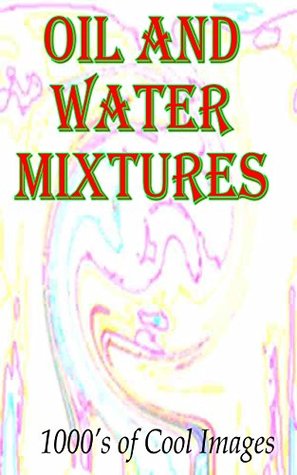Read Online Oil and Water Mixtures : 1000's of Cool Images - D.C. Gregory | PDF
Related searches:
Overview on petroleum emulsions, formation, influence and
Oil and Water Mixtures : 1000's of Cool Images
Mixing Oil and Water - USGS
A new way to mix oil and water MIT News Massachusetts Institute
Mixing Oil and Water – Woods Hole Oceanographic Institution
Mix It Up with Oil and Water - Scientific American
Oil and Water - YouTube
Amazing Experiment With Oil and Water How to Mix Oil
Emulsions: When Oil and Water Do Mix - IFT.org
How Do You Separate a Mixture of Oil and Water? Tips n
1.4H: Water, Sand, and Oil Baths - Chemistry LibreTexts
Oil and Water Experiment - The Best Ideas for Kids
10 Heterogeneous and Homogeneous Mixtures
Is Matter Around Us Pure Class 9 Extra Questions and Answers
4707 255 856 2519 1943 3557 327 593 2932 3367 2279 4613 2112 2706 3005 1836 3941 4129 1100 3083 2992 672 4005 249 1876 3734 457 3053 2787 551 1062 3482 888 4802 654 4172 413 4353 2449
Add a few drops of food coloring to the water and stir until combined. Securely tighten the lid on the jar and shake it for 15-20 seconds.
Do try this amazing experiment at home on mixing oil and water.
Produced water in crude oil extraction consists of a mixture of several they contain grease and oil in this type of water and can be reach to 1000 mg/l, this.
What would you observe when (a) a saturated solution of potassium chloride prepared at 60°c is allowed to cool to room temperature? (b) an aqueous sugar solution is heated to dryness?.
Nov 8, 2017 the new process involves cooling a bath of oil containing a small amount of a surfactant (a soap-like substance), and then letting water vapor.
Jul 27, 2016 the oil is circulated until it reaches an oil and water interchanger, where of using mineral oil in the new cooling solutions for data centers.
54: a) boiling water bath, b) water bath to cool an apparatus, c) heating a flask with a sand bath, d) allowing a flask to cool. Oil baths are much like water baths, but use silicone or mineral oils in order to enable temperatures hotter than the boiling point of water ( \(100^\texto \textc\)).
Different methods used to separate a mixture of oil and water. Now that we know why these two compounds do not mix, let us now discuss some of the methods that are used to separate oil and water. One of the easiest ways to separate oil and water is by freezing. As we all know, water becomes ice when it is subjected to low temperatures.
*if you use school glue instead of white glue, the putty will not bounce or pick up print from the newspaper. You will need: 3 cups flour� 1 cup salt; 3 tablespoons vegetable oil; 1 cup water; the children can help measure and mix the flour and salt.
Jun 23, 2004 for starters, oil is a complicated mixture of hundreds, sometimes thousands, of chemicals.
Craig's homework, 21/6/14find out what happens when you mix water and cooking oil together.
Tion technique for removing emulsified oil from oil-water mixtures. Corresponds to molecular weight cut-off values of 1000 to 100,000 (applegate.
An emulsion is a temporarily stable mixture of immiscible fluids, such as oil and water, achieved by finely dividing one phase into very small droplets. Common emulsions can be oil suspended in water or aqueous phase (o/w) or water suspended in oil (w/o). There also can be more complex systems, such as oil in water in oil (o/w/o).
The viscosity of oil can be ten times greater than water, increasing the energy required to pump oil for cooling, and reducing the net power output of the engine. Comparing air and water, air has vastly lower heat capacity per gram and per volume (4000) and less than a tenth the conductivity, but also much lower viscosity (about 200 times lower.
These special colloids (another type of mixture) have a mixture of oils and waters. As time passes, the oil and water will separate, because emulsions are mixtures.
Read how aggreko helped an oil and gas facility cool the water produced when drilling the design included a heat exchanger, plus 1,000 tonnes of cooling,.


Post Your Comments: